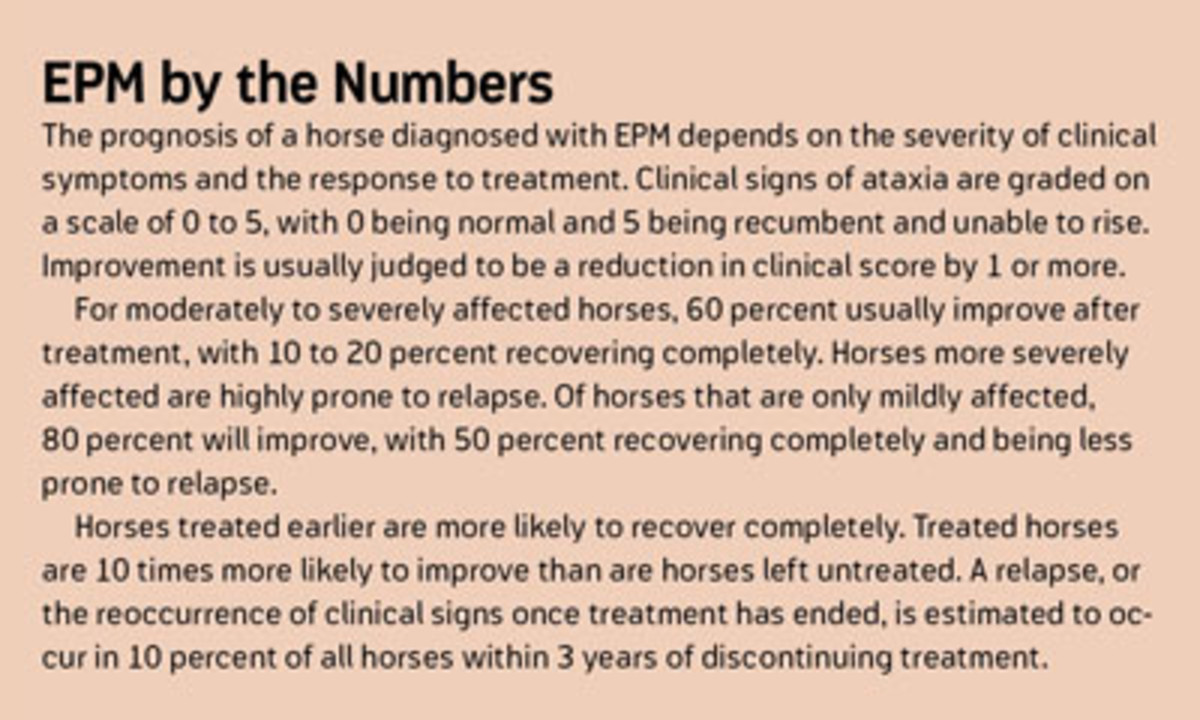Q. My friend’s horse has EPM. Can a horse that survives this disease be rehabbed to be rideable again?
Read More: Blood Titers

BRIDGIT REEVES, Tennessee
A horse that recovers completely can return to their original intended use. For horses that do recover, the improvement is based on the initial severity of the clinical signs (see box). However, not all horses that “improve” according to the clinical scale are able to be safely ridden again.
Equine protozoal myeloencephalitis is a progressive neurological disease of horses caused by the microscopic parasite Sarcocystis neurona (S. neurona). This parasite has a two-host predator-prey life cycle, meaning it needs two separate species of host mammals to reproduce. The first species (definitive host) is the opossum, which passes oocysts (like eggs) in its feces; these are then ingested by one of many intermediate hosts (nine-banded armadillo, striped skunk, raccoon, cat, etc.). There, the organisms infect the muscle and mature into sarcocysts (cylindrical cysts containing parasitic spores). When the intermediate host dies, the opossum then eats the sarcocyst-infected muscle, thus completing the life cycle.
How do horses fit in? The horse is considered an aberrant or dead-end host, as S. neurona does not mature into sarcocysts in the muscles of infected horses and therefore can’t complete its life cycle. Horses become infected by ingesting feed or water contaminated with definitive-host feces. S. neurona then enters the horse’s central nervous system (brain and spinal cord) and causes damage.
Clinical signs of EPM are extremely variable because S. neurona may cause damage anywhere in the brain or spinal cord; symptoms can range from mild lameness to recumbency (can’t arise) and even death. Some horses’ clinical signs appear gradually, while others have a much faster progression. Classically, EPM clinical signs are asymmetrical ataxia (incoordination affecting one side more than the other) with muscle atrophy. Early signs of EPM are frequent stumbling and inexplicable lameness. If the brain is infected, clinical signs may include behavioral changes, blindness, seizures, drooping lip or ear, head tilt, and atrophy of the tongue and chewing muscles.

Time is a crucial factor in the treatment of EPM. Earlier treatment will reduce the amount of central nervous system damage, which can be permanent. Medication will kill the protozoa, but will not repair the damage to the nervous tissue, so eliminating the protozoa earlier means less total nerve damage.
JACKIE BOWSER, DVM
Mississippi State University College
of Veterinary Medicine






